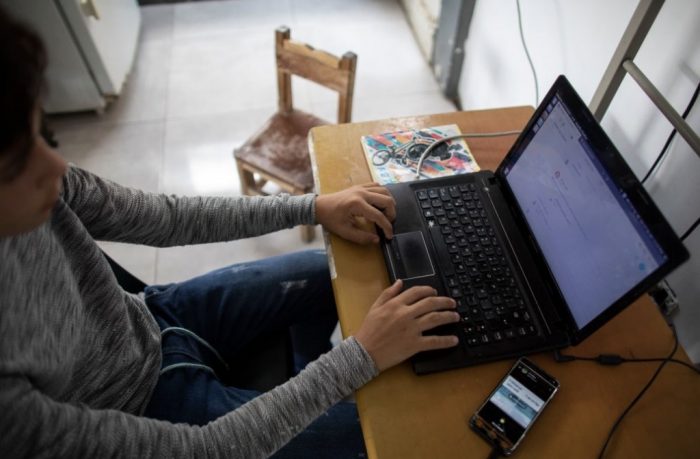As more Maine students are requiring English language learning support, Department of Education data shows fewer students successfully exiting these programs. (Photo by Getty Images)
As Maine students struggle with academic recovery from the pandemic, these challenges are further exacerbated for students whose primary language isn’t English.
Over the past decade, the number of multilingual learners — students who have a home or primary language other than English and are not yet proficient in English — have increased steadily, with more than 7,200 students statewide last school year, according to Maine Department of Education data.
At the same time, the rate at which these students exit, or no longer require additional support for English language learning, is decreasing.
That means as more students need these services, it’s unclear whether their needs are being met in schools.
Most of the state’s multilingual learners are predominantly not white, according to DOE data. More than 61% are Black, and 14% are Latino.
Maine DOE data on the exit rate for multilingual learners dates back to 2017-2018 and shows steady decline despite increasing numbers of multilingual learner students. The exit rate went from 16.8% in the 2017-18 school year to 7.8% in 2022-23, the latest year with data. During those same years, multilingual learner enrollment went from 5,256 to 6,264 students.
“Seeing a decrease like this is kind of like a red flag,” said Melissa Cuba, assistant professor of special education at the University of Maine, who studies the intersection of multilingual learners and students with disabilities.
“You want to see your students exiting services within an appropriate amount of time. This is indicating to me that students aren’t making language gains or meeting those objectives.”
Student academic achievement may be rebounding, but Maine has more work to do
Multilingual learners graduate from that status once they achieve a certain proficiency level either on an annual statewide assessment, or an alternative assessment certain students might be eligible to take, according to a DOE guidance document on identifying multilingual learners with disabilities.
School districts are still expected to monitor students’ progress for two years after they are deemed proficient, and they can re-enter multilingual education if their assessments show a reversal in English proficiency.
Maine’s overall academic recovery from the disruptions caused by COVID-19 is unclear due to a lack of long-term data and frequently changing assessments, but even comparing scores from regular education to students receiving one or more specialized services in the same year, the large achievement gap between multilingual learners and non-multilingual learners is significant.
For example, in 2022-23, 34% of all non-multilingual learners were below expectations in English Language Arts and 50% in math, according to statewide assessments. But those percentages were more than 72 and 84% in English and math, respectively, indicating far more multilingual learners testing below state expectations.
Challenges are worse for multilingual learners with disabilities
Almost 18% of multilingual learners in Maine are also identified as needing individualized education programs for disabilities, which means schools have to provide both kinds of services for these students.
Multilingual learners in special education are required under federal law to participate in state assessments, but for students with different kinds of disabilities, Maine DOE provides guidance on alternative assessments or accommodations. For example, a read-aloud option for students with visual impairments.
For alternative assessments, which can only be taken by students with cognitive disabilities who require extensive individualized instruction and substantial support, exit rates have also declined over the past few years, according to the DOE dashboard.
With both assessments showing a drop in exit rates, Cuba said this could be due to several factors, but most likely are a lack of language services offered in schools for students that need them, a lack of evidence-based programs designed to help students achieve English proficiency, or the lack of opportunity during pandemic-driven closures and hybrid learning to practice English skills while students were confined at home.
Schools are expected to provide a free appropriate public education to all students with disabilities under the Individuals with Disabilities Act, and provide language instruction programs administered by trained teachers under Title III of the Elementary and Secondary Education Act. But assessing students appropriately as needing both kinds of services and helping them make academic progress is especially challenging, experts say, as all schools struggle with academic recovery, staffing challenges and expiring pandemic-era emergency funds.
YOU MAKE OUR WORK POSSIBLE.

